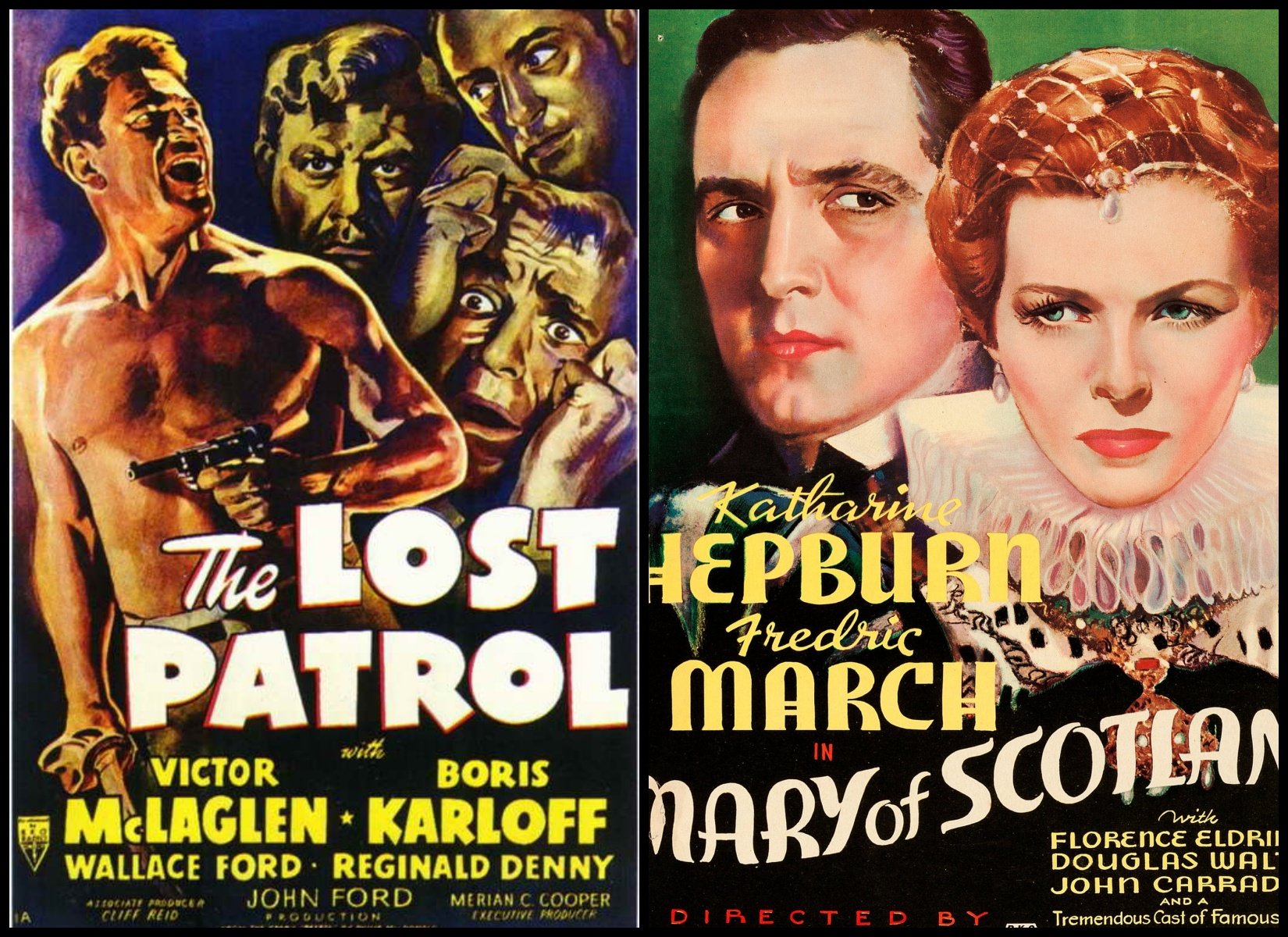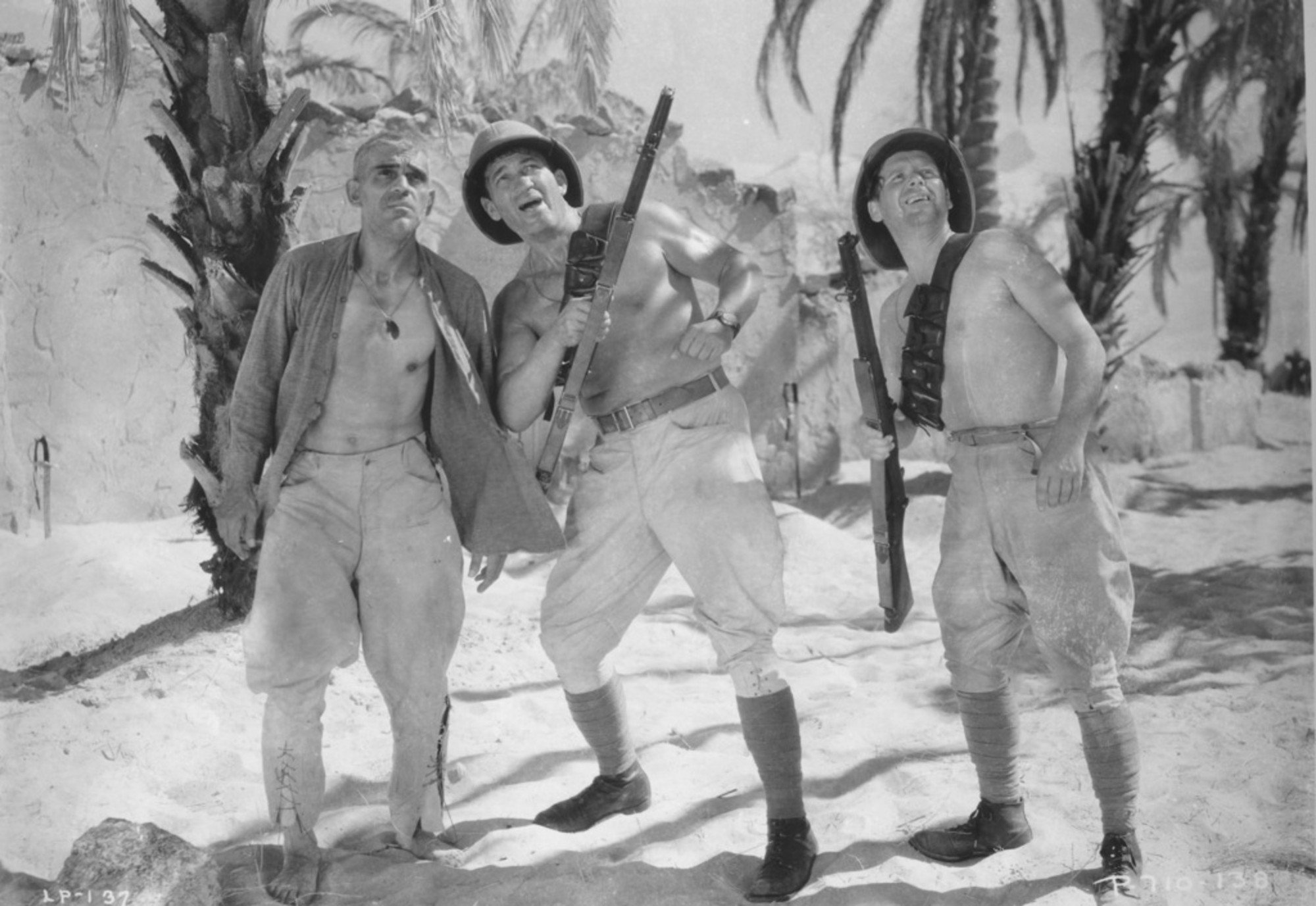JOHN FORD Chapter 3: The Lost Patrol (1934, RKO) & Mary Queen of Scotland (1936, RKO)
As part of our The Ford Fundamentals: John Ford Director of 2022 series, founder.programmer Craig Hammill is writing an appreciation in 12 chapters, a prologue, and an epilogue across the year.
Important Note: Movies will be talked about in depth so definitely spoilers!
CHAPTER 3: Before he was “the Old Master”
John Ford’s journeyman movies of the 1930’s, his superb action directing, and the love affair with Katherine Hepburn that would mark all his cinema afterwards
As any great creative artist moves from flesh and blood to myth, the great works tend to get discussed ad nauseum, the minor works forgotten or relegated to footnotes of footnotes.
But sometimes these footnotes actually paint the more realized portrait of the artist.
Scorsese movies like Boxcar Bertha and Alice Doesn’t Live Here Anymore already signal very early in his career that Scorsese was both a pragmatist and experimenter ready to surprise his audience with a genre he was not associated with (the exploitation picture and woman’s picture here respectively). Scorsese has always been open to take on a movie to make sure he stays working in between his passion projects. And often times it is these off-shoot movies that surprise and delight the most.
Works by William Shakespeare like Timon of Athens, Coriolanus, and Troilus & Cressida though not nearly as oft performed as his best works still reveal a surprisingly conflicted and astute mind wrestling with the contradictions and difficulties of both loving people and understanding that human nature is fickle. One can feel in these works the optimist wrestling the pessimist.
And so it is, in a way, with John Ford. His 1930’s output pre-Stagecoach (the movie that would once and for all cement Ford as clearly the best of the best) is wildly varied because he was still, by and large, a talented journeyman director who took assignments as they came to him.
The 1930’s sees Ford doing everything from a trilogy of wonderful home-spun Will Rogers comedies (Dr. Bull, Judge Priest, Steamboat Around the Bend) to a Shirley Temple children’s film (the often overlooked masterpiece Wee Willie Winkie) to a big budget disaster picture (The Hurricane).
What a way to cut your teeth on your way to becoming the best in your field: to get to do a picture of every genre, two to three times a year, without the burden of “greatness” placed on one’s brow like a crown one realizes is more Cavalry gospel than bejewelled.
Two of Ford’s most interesting pictures of this era-one truly great, one very flawed though interesting-are the two we show this month: 1934’s rip-roaring British soldiers under attack by an unseen enemy in the Arabian desert The Lost Patrol (a truly great, efficient, brutal picture) and 1936’s unwieldy historical romantic epic Mary Queen of Scotland starring the one woman Ford would romantically love (along with his wife, Mary) his entire life: Katherine Hepburn.
The Lost Patrol’s cinematic greatness is a bit easier to parse. A 73 minute taut action-adventure potboiler (it would be great to return to this kind of near B horror and action picture today), The Lost Patrol finds Ford’s ensemble repertory company (Victor McLaglen starring again, Wallace Ford) joining up with the always great Boris Karloff in a tale where, like Full Metal Jacket, the enemy (a sniper picking off the soldiers one by one as they go crazy from hunger and thirst) is mostly unseen for the majority of the picture.
When we talk of John Ford, we often focus on the poetry, the humanism, the tremendous command of staging of groups of people. But movies like The Lost Patrol and Stagecoach (most famously), also reveal Ford to be the greatest stager (along with Michael Curtiz) of action of the classical era.
Ford’s approach is often leaner and less flashy than Curtiz’s. But the stunts and tension and thrills Ford created are so impactful that we see them reappear in movies like 1981’s Raiders of the Lost Ark (where a Stagecoach stunt is literally recreated during the Desert Chase sequence).
All of this is simply to point out that Ford often knew what was needed and when in any genre he worked in. A key quality of a master director.
And his imagery, like the final shot here of the dead soldiers’ graves, would be picked up on and developed by masters like Akira Kurosawa (who would build on this imagery in Seven Samurai among other pictures).
No one can beat John Ford, when he’s at his best, for balancing tones, genres, transitions, imagery, emotions.
Ford didn’t always knock it out of the park of course. Nobody does. And one movie where the elements definitely DO NOT FEEL balanced is his 1936 historical romantic epic Mary Queen of Scotland which, nevertheless, is possibly THE CRUCIAL MOVIE to see, to understand the deepening of Ford’s emotion and poetry thereafter.
There are a lot of reasons why Mary Queen of Scotland is a fascinating if bumpy ride (even Ford struggling is better than 99% of other moviemakers).
One, Ford seems a bit ill at ease outside the American historical idiom he so clearly relates to the most. Here he makes a 16th century costume historical epic about Scotland’s ill-fated Catholic Queen, Mary, who would ultimately be killed by her Protestant sister, Elizabeth the I of England. Corsets and rufflenecks and pantaloons and royal courts just don’t seem to be the speed of an Irish-American director who loved khakis, jeans, the dirt and dust of the American wilderness, and was a rebel and democrat at heart.
Second, Ford (like most directors), often had trouble with material that was so closely tied to his own religious beliefs (here a movie made by an Irish Catholic that deals explicitly about the battle between Catholicism and Protestantism). He’s a little too close in his own sentiments to potentially give the material the distance and clear eyedness it needs.
And finally, he was VERY close to the movie’s star, Katherine Hepburn. So much so, the movie really feels like a two hour love letter to a woman Ford knew he could not spend his life with.
It’s sometimes near laughable how the male lead (the always game and great Frederic March) seems to be playing second fiddle to John Ford’s camera in terms of vying for the affection of Ms. Hepburn. You almost sense Ford wished there was no male romantic lead to have to deal with at all. The Director of the picture should suffice.
Hepburn and Ford would carry on a fairly intense affair (which would quickly become public knowledge) during the picture which would lead Ford to seriously consider leaving his wife, Mary.
But ultimately both Ford and Hepburn would agree such a decision would be disastrous and wrong. Hepburn was too much the individualist and ambitious performer to be saddled with a lifelong relationship with a self-conflicted mercurial director like Ford (though she would pull it off with a fellow actor, Spencer Tracy, another married tortured alcoholic Irish Catholic). And Ford, for all his lifelong ambivalence and self-destructiveness, could not bring himself to leave his wife Mary and his two children.
That’s not to say that Ford reformed after this. He reportedly had affairs of all kinds throughout the majority of his life. And he was reportedly often impossible to deal with on a personal level. But he did here chose to re-affirm his belief in his family, his wife, and the greater good. A decision Ford would make again when he enlisted to serve in World War II when he was nearing 50. And like his fellow filmmakers George Stevens, William Wyler, and John Huston, Ford would insist on seeing combat first hand.
This isn’t to overly romanticize Ford or gloss over his flaws (which were legion like many of our flaws are). But it does point out the fascinating tension at the heart of Ford. A tension which would express itself more and more again and again post the Hepburn affair. Characters more and more would sacrifice for the family, for the greater good, for things bigger then themselves. Characters would often end up alone and/or re-committed to strengthening and building institutions the very same characters knew were problematic but ultimately worthwhile.
It’s an ambivalence that finally gives Ford’s work the complexity within its simplicity, the deep emotion within its formal brilliance that elevates him to the level of America’s greatest “old master”.
These two pictures-The Lost Patrol and Mary Queen of Scotland-while not necessarily top tier Ford are still vital to an understanding of what made top tier Ford, top tier.
Sometimes the footnotes touch us just as deeply as the text itself.
Craig Hammill is the founder.programmer of Secret Movie Club



